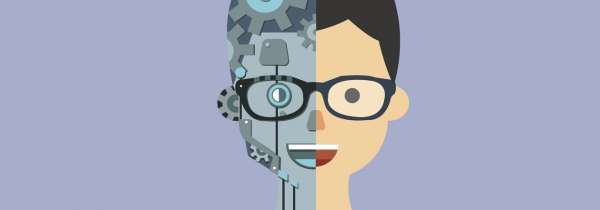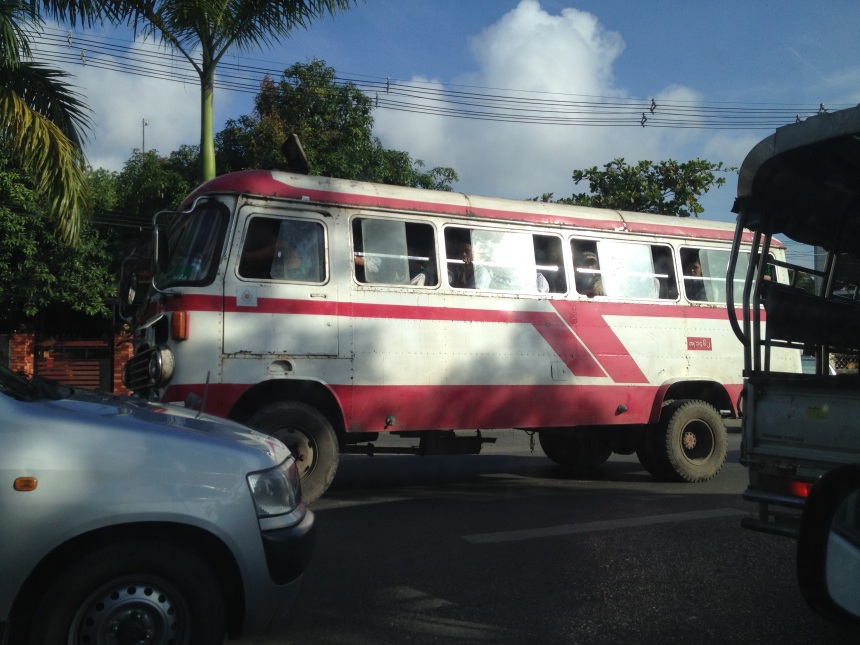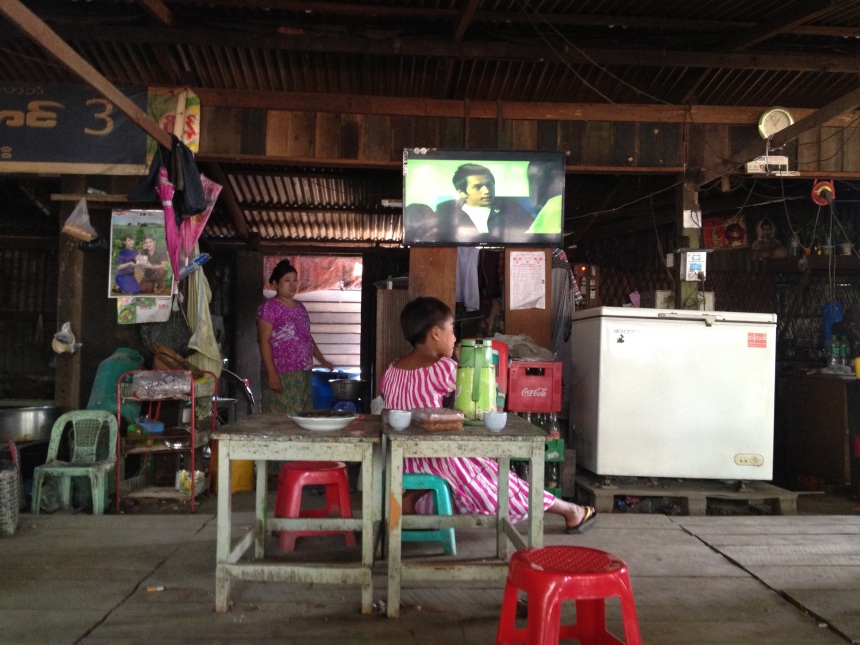I think we’re each a product of the culture we were raised within. This isn’t really a stretch. Of course, it’s true. But how many of us have really taken time to think about what that really means, in terms of how we ‘fit’ into the world we inhabit? How many of us realize how much we were influenced by the way the adults around us responded to the world (or didn’t), how our community’s sense of place, privacy, responsibility, influence shaped how we saw ‘others’ and responded in stressful situations. How many of us consider the history, perspectives and values of people we meet for the first time and how that shapes how they interact, what they say and how they hear what we say?
I grew up in the 1970’s and ’80’s – those were my sentient, formative years. The years when I was paying attention to what was going on around me and when I was trying to ‘fit in’. I wasn’t aware of any of that stuff outlined above. I didn’t even realize that the benign neglect my parents demonstrated was detrimental much more than there wasn’t dinner on the table every night and they weren’t in the stands (or even knew) when I was running a cross country meet or playing soccer. I don’t think either of my parents ever came to a sports event I was involved with. My dad liked coming to football games on Friday nights, but not so much because I was in the marching band: he was much more interested in being raunchy and obnoxious with the low brass boys, and watching football. That’s ok because I wasn’t terribly interested in hanging out with my dad at football games on Friday nights and I ditched him as fast as I could most weeks. (I should mention, my parents divorced when I was seven, so I only saw my dad once a week at most) For the most part, I was a ‘free range kid’ in the sense that no one worried about me unless I didn’t show up by dark or I called because I had fallen off my bike (and we didn’t have cell phones at the time either). I roamed in about a five-mile radius from home and rarely did my parents know the full story of where I was, who I was with or what we were doing.
That sense of freedom grew as I did through my teens and into my early twenties. I rarely had to answer to anyone about choices I made, the friends I chose to hang out with, the places I worked. I felt like I had conquered the world by the time I got to college. I had always felt like a round peg in a square hole in many respects: most of my friends in high school (in NoVA) were from intact families and were at least second generation college-goers. (although I’ve found out since that most grew up with the same sort of feeling of benign neglect that I did, or worse) We weren’t poor, but I always felt like we weren’t as well off as others around us (that was more a function of my parents’ frugality – they had both grown up at the end of the depression in working-class families). I prowled the local mall, found a group of wildlings like myself and got into some ‘interesting’ situations – often referred to as ‘poor personal choices’ today. Most of my 20’s were spent doing what I wanted to, working toward that elusive thing called ‘adulthood’ that I would know when I saw it, or at least that’s what I was told.
The only other thing that is important about this story of my youth is that I was born into two families that knew how to fight for what they wanted or needed. My parents, grandparents and great-grandparents had survived their own travails as children and adults, and it was ingrained in our DNA that if necessary, we were able to survive. Just as an example, my high school guidance teacher called me to her office during my junior year to tell me that my grades and course choices were not ‘college material’ and I should consider a vocational option past high school. She was ‘doing her job’ and was woefully underinformed about who I was or what I intended to do with my life, but I recall saying that not going to school was not an option for me. My parents expected me to go to college – that was certain. And I did know that it was my ‘ticket’ to the future. I didn’t have any intention of not going just because this woman, who didn’t even know me beyond my ‘file’, had decided I wasn’t capable of handling it.
I fought a lot for what I wanted – back then we called it a ‘struggle’, but in hindsight, it was a fight. I learned how to get around people that stood in my way, how to face others who thought they could exploit or manipulate me (or friends), and I began to develop a sense of being a force to be reckoned with. My first job was as a compliance officer for a company that hired retired military men as insurance and securities salesmen. That was a fight most days (and could fill a book). I had to constantly resist my father’s insistence that I get a government job for the security and guaranteed pension. I had to learn how to resist the sexism, classism and mean-girl attitudes that pervaded the 1980’s, and I learned how to fight for political and community values that seemed to be eroding before my very eyes. I figured out that adults didn’t know half of what they professed to, and that rules were made for people who needed them. There’s more, but I think I’ve made my point.
All of this as a response to the tone and messages of our readings/viewings this week related to Mindfulness. I’ve capitalized it on purpose. It is a philosophy that I had to be introduced to. It did not ‘fit’ into my early life paradigm of scrapping through difficulty, ignoring barriers, pushing past people who tried to stand in my way, and making space for myself and what I wanted from life. I was not selfish in my wants – I was more of a champion for the underdog, a role I knew well.
It didn’t happen until I was in my mid-30’s and struggling with the fight on a minute-by-minute basis. It’s worthy of more than a mention, but I was exhausted from the fight and literally couldn’t fight through any more. I had two wonderful, beautiful children, a nice house in the suburbs, a husband who was happy, engaged and supportive, a large extended family. There were a series of deaths in my family that had left me feeling very vulnerable to the forces of the universe, but that was only the visceral catalyst for the dissatisfaction with the world I was feeling. I was deeply unhappy as a public school educator: exhausted by having to endure the stresses and pressures that responsibility for other people’s children can heap upon one; of dealing with colleagues who thought that they didn’t have to demonstrate civility and compassion toward each other, the children (and families) that they engaged with, and a system that knew – absolutely knew – it wasn’t serving every child’s best interest but it was doing a ‘good enough’ job. I fell into a very deep depression. The can-do spirit and the scrappy attitude I had cultivated throughout my life was a fleeting memory.
For six months I struggled to make sense of what was happening. For the first nine weeks I functioned in a fog. The next three months I tried to make sense of how I felt, how everything could have crashed down around me like it did – what had happened and what could I do to ‘get back to normal’. I got back to what appeared to be ‘normal’ (worthy of another tale), but I am not the same as I was before. I was lucky, once again, and found a way toward Mindfulness philosophy through Buddhism, yoga and meditation. At the time, it was much more of a personal journey, but now (eight years later) I see it as an evolution into a sphere of understanding that helps me make sense of the world, to support others in their journeys through life, and to be my authentic self, even if I don’t always ‘fit’.
Ellen Langer’s Mindful Learning work is rich with the learning and lessons that came to me only after I had crashed and burned. The being aware of one’s surroundings enough to understand them and how you function within is such a valuable lesson to know and understand while in college and into one’s 20’s. I wish I had. The notion that we are all capable of learning beyond what is being taught is liberating, isn’t it? And, the ability to think deeply, question assumptions and expectations, to be aware of the constraints that culture, family and community (including less mindful professors, advisors and mentors) can place upon you is so very important to being able to function freely – to be a free range learner – in both times of ease and strife, that is the real value of a liberal education. None of us are perfect. We may think we are, or we may strive to be, but I’m convinced it is not possible, or even desirable to be so. I am fairly convinced though that if we are mindful in our attitude, and authentic in our actions, kind to others and seek to do good in this world then we will have achieved ‘greatness’ for ourselves.
===================
A brief note about some of the other Mindful sources from this week (I couldn’t work them into this post in a more artistic way):
This quote from A New Culture of Learning (Thomas and Brown 2011) is so very powerful:
Change motivates and challenges. It makes clear when things are obsolete or have outlived their usefulness. But most of all, change forces us to learn differently. If the twentieth century
was about creating a sense of stability to buttress against change and then trying to adapt to it, then the twenty-first century is about embracing change, not fighting it.
I could not agree more. And I think this is kind of what I was getting at above, although in a very veiled way. There is a liberation that happens when one can embrace and welcome change, a sense of renewed hope for what is possible that doesn’t always exist in a stable environment. It is not comfortable, but the discomfort often pales in comparison to the freedom that results. (thinking about Plato’s Cave allegory here). And if the twentieth century was really about creating a sense of stability, which I buy (two world wars, a worldwide depression, countless other regional wars, environmental, political and social instability)
Ken Robinson – How to Escape Education’s Death Valley
Sir Ken Robinson has been a champion of looking critically at the dysfunction of education systems. He has informed my beliefs and values for what is a ‘free and appropriate’ education for children and his perspective has lifted me out of feeling hopelessly frustrated more than once. His anectdotes and analogies are touching and reach into people’s thinking through humor. But he, like others, are ‘faces’ for the hard work going on in classrooms and communities each day. There are real people who are working themselves to death to keep children in school, to teach them all that they can and to shape them into humans worth knowing. While Robinson’s words and thoughts are uplifting, be mindful – and actively engaged – with the educators who are fighting the good fight each day. And be engaged parents, if you choose to take on that challenge: support wide learning opportunities, resist ‘group think’ and standardization of learning that serves only the institution and not the individual.
Why PEAS Are the Key to a Successful Education | Dr. Michael Hynes
I can’t recall how this made it into the mix, its obviously not part of the reading list..
This is one of those tireless educators I mentioned above. Dr. Hynes has scrapped through his own issues in life, and likely had some sort of mid-life revelation, about what is real and important in the world. I am grateful that he is able to stand up and tell his story because it does inform the rest of the world in a way that is positive, challening and possible. And PEAS should be the goal for us all – both as individuals and as educators.
It is lofty in approach, and the bookThe Educational Conversation: Closing the Gap and Parker Palmer’s work has deeply informed my values as an educator.
Garrison, J. W., & Rud, A. G. (Eds.). (1995). The educational conversation: closing the gap. SUNY Press. Dr. Garrison is a Professor here at Virginia Tech
Dr. Garrison is a Professor here at Virginia Tech and typically teaches an ed. philosophy course in the spring related to this book. Last year it was titled Gaps in the Educational Conversation. He is a world-reknown Dewey Scholar and a professor of mindful teaching himself.







